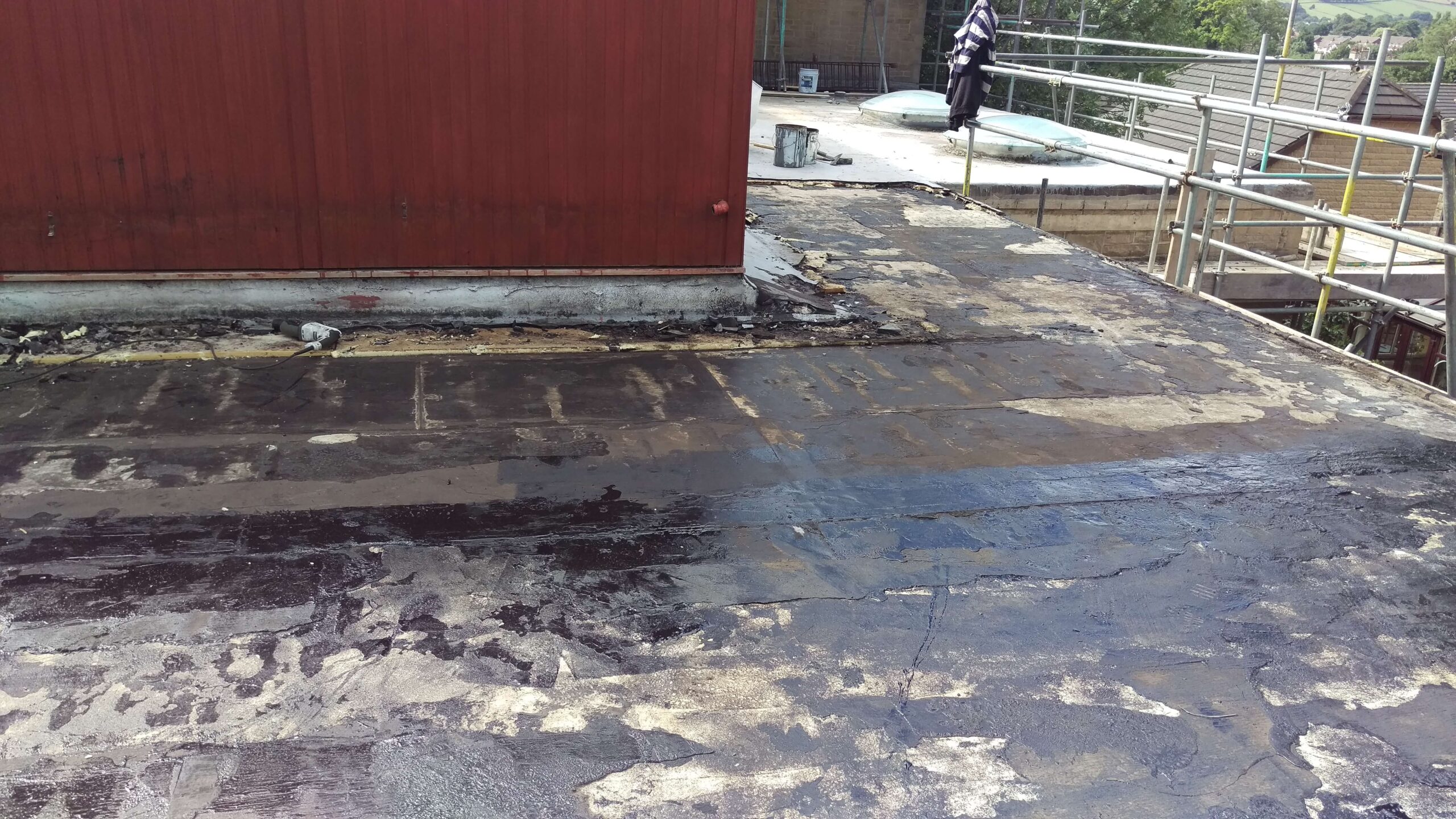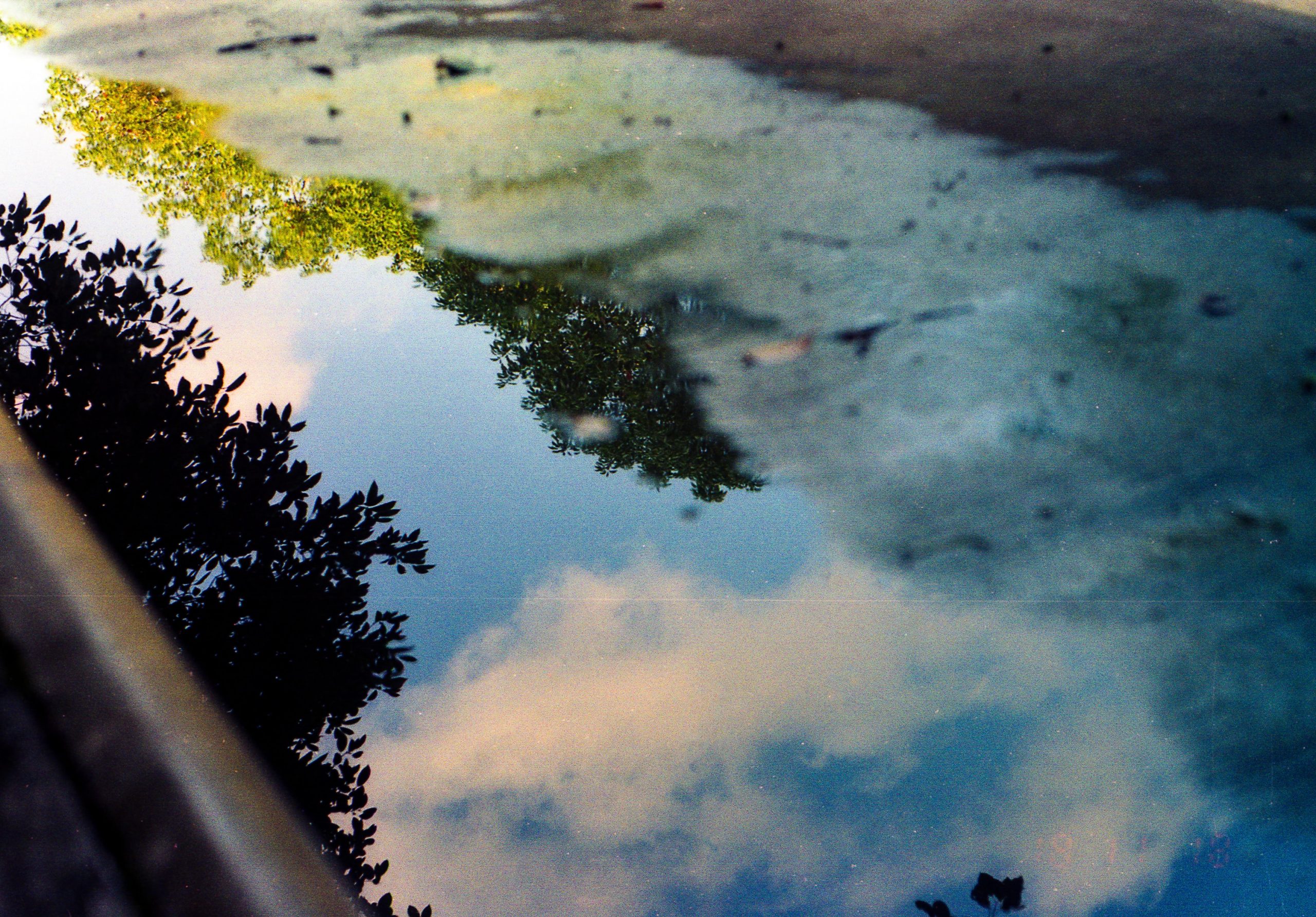Storm damage & emergency flat roof repair

Flat roofs are incredibly susceptible to storm damage and rapid wear and tear. This is because flat roofs have less than 15 degrees of pitch and so water and debris collect on top.
Many people opt for flat roofs when extending their homes as they are much cheaper and easier to install. They are also easier to maintain than traditional sloped roofs and do not get in the way.
Flat roofs tend to be made from felt and asphalt. These materials are much less durable than traditional roofing materials and can cause issues with insurance providers.
If you maintain them well and the roof was installed correctly, they can last up to 50 years. Traditional roofs only last around 60, and so they are fairly hard-wearing. Felt and asphalt-based roofs will deteriorate faster than EPDM or slate-based roofs.
Felt materials are susceptible to ponding, blistering, and splitting, which can lead to draughts, damp, and leaks to develop inside your home.
If you regularly clean, check and maintain your roof you can prevent serious damage occurring and keep it in working condition. This is especially important in spring and autumn due to the variable weather conditions. We also recommend checking on your flat roof after storms, heavy snow, and wind.
Maintenance
A quick and easy way to keep an eye on the condition of your roof is by looking at your interior ceiling. If there is water damage, you will begin to see spreading stains and this will quickly tell you that you need to perform some repairs.
You should check your roof exterior at least twice a year, at the end of winter and summer. This allows you to see whether any damage has been caused.
Regular checking of the roof will allow you to spot damage early and save you money in the long run. Climb a ladder and give the surface a once-over, or look down from a high window. Most problems will be easy to spot, particularly if there is a puddle or if the roofing has split.
Storms can cause a huge amount of damage to flat roofs, and this is why it is especially important to check your roof after a storm has passed through. If there is a lot of rain this can collect and ‘pond’, and the wind can tear layers of the felt off the roof.
If there is a snowstorm, it is vital to clear any fallen snow off of your flat roof. This is very heavy and can cause structural damage to the roof. Additionally, when it begins to melt this can make the roof leak and cause damp to form inside the house.
We recommend regularly using a leaf blower or carefully sweeping debris such as loose leaves off the top of your flat roof. If these are left to build up, this can cause puddles of water to form and put undue pressure on one area of the roof.
In conjunction with this, we recommend that you prune any trees with branches hanging over your roof until there is a 1-meter space around the roof. This prevents damage from branches falling, but also stops loose leaves building up on the roof.
We advise not standing on your flat roof. Most are not designed to withstand the weight of a human. You can cause damage to the material, or you could slip and fall off. If you are worried or unsure, we recommend hiring a professional to come and help you.
Ensure the drains are cleaned and emptied regularly. If the water cannot run off the roof it will collect and pool, leading to damage. By giving the drains a clean, you give the water a smooth path to drain off.
Blistering
Blistering is usually caused by heat and sun exposure. Felt roofs have many layers that air can get trapped in. As the heat from the atmosphere warms the trapped air it expands under the felt, creating little pockets.
These will vary in size with the temperature and this puts pressure on the material, eventually causing it to rupture. This can then cause further issues with water damage.
To fix blistering, you are likely to need to replace the material on the roof’s surface. We advise paying qualified professionals to do this, as they will sufficiently weatherproof the new fabric.
Splitting
This is a very common issue with flat roofs and is caused by the material cracking and tearing due to exposure. This makes the roof appear scruffy and can lead to structural issues if moisture enters the home.
As well as exposure, splitting can be caused by excessive pressure (such as someone standing on the roof), ponding, temperature extremes, or poor quality building when it was installed.
This is a task that you can probably do yourself if you are handy at DIY. You simply need to remove the damaged area of roofing and clean the exposed area.
Ensuring it is fully dry, add some adhesive and lay down a fresh section of material. We still recommend hiring a professional to do this if you have the funds so you can be confident in the finish of the repair.
Ponding
As the name suggests, ponding is when a pool of water collects on your flat roof. This can be due to blocked drains, heavy rainfall, or simply not enough of a slope on the roof.
Over time, ponds can make indents appear in the roof material. The water damage can cause stains and damp to appear on the interior of the property too.
If the ponding is not sorted by cleaning the drains, you may need to look at installing extra drainage systems, such as external gutters. These work well if the ponding is close to the edge, but for more central ponds we recommend an automatic pump.
You can also have lower points of the roof relaid and built-up to make a larger slope so the water runs off.

